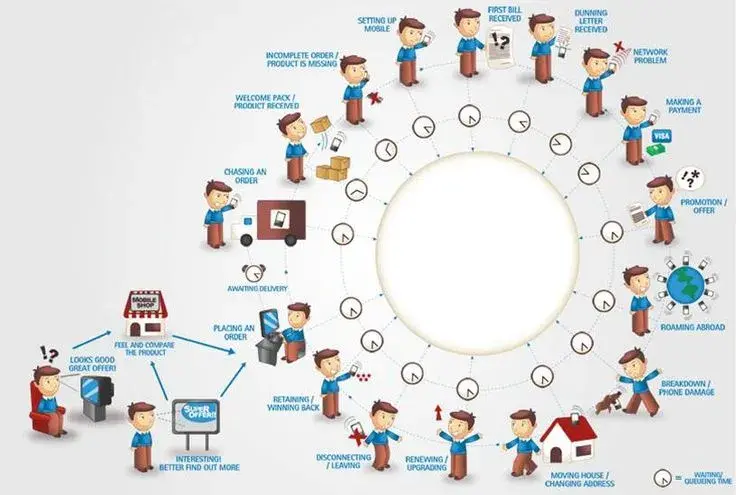Previous Articles in Product Visioning series:
Product Visioning : https://pm-powerconsulting.com/blog/product-visioning-5-steps-scoping-software-projects/
Product Visioning: 1. Elevator Pitch: https://pm-powerconsulting.com/blog/product-visioning-elevator-pitch/
Product Visioning: 2.1 User Persona: https://pm-powerconsulting.com/blog/product-visioning-2-1-user-persona/
Product Visioning: 2.2 User Goals, Pains and Gains: https://pm-powerconsulting.com/blog/product-visioning-identifying-right-target-persona/
Product Visioning: 2.3 Building Hypotheses using Persona and their Goals, Pains and Gains: https://pm-powerconsulting.com/blog/product-visioning-2-3-building-hypotheses/
What is User Journey Map?
A product’s (or service’) success depends heavily on the experience it provides to the User. Often times, the industry had witnessed, well thought out products fail to enthuse customers. When we dig deeper, we find that, one of the major reasons was the lack of understanding of the ‘end user need’ at the time of launch. It is easy for a product team to think inside-out. Instead, when the teams focus on the end user and think on their shoes, for them, the product/service launched has better chances of success.
User Journey Map is one of the ways a product team visualizes the User’s interactions with the product on a timeline. The User Journey Map is a visual depiction of channels and touchpoints a User interacts with the product / service to achieve a goal.
The User Journey Map could tell the story of the Customer from the initial touch point to the engagement and long term association mapped over a timeline.
Example of a simple user journey of a productivity app:

Courtesy: https://www.appcues.com/blog/user-journey-map
Usually, the User Journey Maps are way more complex and evolve over a period based on research, market feedback and analytics data.
In out earlier blogs, we have seen, how to identify User Persona, their Roles and Goals. For a journey map, we would pick one of the Goals and arrive at steps the User has to take to achieve it. This involves Channels, Touchpoints and Timelines.
Channels: Where interactions with the User takes place like website, mobile app, physical store, phone call, etc.
Touchpoints: The actions the User is doing through the channels
Timelines: Could be finite like a day, month, year or could be in in phases / stages like awareness, decision, closure, support etc.
We have to collect as much data through research, interviews, analytics to understand user behavior and emotions when and how they interact with the product / service. Mapping all these together in a visual form we get User Journey Maps.
An example of a detailed User Journey Map:

Source: https://theuxblog.com/blog/customer-journey-mapping
For an existing product, when we want to change the user experience, we, first map the as-is state. Then future state is envisioned and proposed experience is mapped. The gaps are identified and assigned to various owners internally as appropriate.
Advantages:
User Journey Maps will help in having a common understanding among the stakeholders, identify and address areas of improvement, plug the gaps, conduct focused surveys at specific touchpoints, add/delete channels and many more towards improving User Experience.
A few things to watch out for:
Teams could get carried away by what they think’the user want’ vs actually what the user wants. So, make sure the User Personas reflect actual user and the Goals are backed by enough research and data
Capturing the emotions/experiencesat every touchpoint is very useful and important. Even though the data may say that there is enough usage of a particular touchpoint in a journey, until we capture the emotion, we may not know whether the User is happy or not at that stage.
Different Flavors:
- Empathy Map
- Experience Map
- User Journey Map
- Service Blueprint
There are distinct advantages and hence situations when we would chose one over the other. But, all the above flavors work towards helping us improve User Experience. I would write a more detailed blog comparing the above, with example, in future.
Key takeaways:
A User Journey Map must include: personas, goals, channels, touch points, timelines and emotions/experience.
It is used by product/service teams to visualize User’s interactions over a period.
A good User Journey Map reflects reality as much as possible backed by extensive research and feedback.
Reading materials:
https://conversionxl.com/blog/customer-journey-mapping-examples/
https://uxknowledgebase.com/journey-mapping-part-1-6c9ad6d3bfbc




